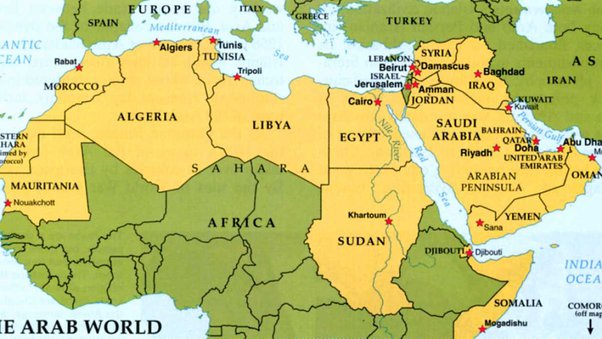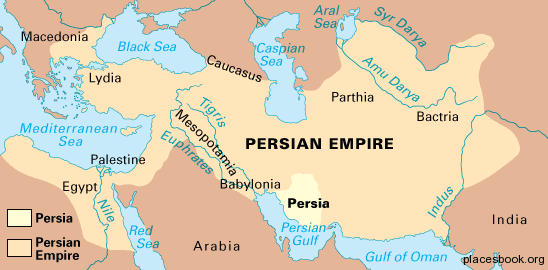The modern-day country that is located where the Persian Empire began is Iran. With a history that dates back thousands of years, Iran was the birthplace of one of the world’s most influential civilizations. From the ancient Persian Empire to the rich cultural heritage that still thrives today, Iran is a land steeped in history and tradition.
Iran’s location in the Middle East made it a strategic crossroads for trade and cultural exchange, which played a crucial role in the development of the Persian Empire. Its geographical position also contributed to its influence and power in the ancient world. Today, Iran is not only known for its historical significance but also for its diverse landscapes, vibrant cities, and warm hospitality, making it a fascinating country to explore.
The modern-day country where the Persian Empire began is Iran. This ancient empire, also known as the Achaemenid Empire, was founded by Cyrus the Great in the 6th century BC. Located in southwestern Asia, Iran has a rich history that dates back thousands of years. It is home to significant archaeological sites and cultural treasures that showcase the legacy of the Persian Empire.

Contents
The Birthplace of the Persian Empire: Where It All Began
The Persian Empire, known for its vast expanse and rich history, originated in a region that is now part of modern-day Iran. This ancient civilization thrived in what was once known as Persis, a province in southwestern Iran. Persis, also known as Parsa, gave rise to the ancient Persian civilization and became the heart of the mighty Persian Empire. Let’s delve into the details of what modern-day country encompasses the birthplace of the Persian Empire and explore the historical significance of this region.
The Land of Persis: Present-Day Iran
The Persian Empire, which was one of the largest and most powerful empires in ancient history, was situated in the region that is now modern-day Iran. Today, Iran covers a vast area in the Middle East and is known for its rich cultural heritage and historical significance. The ancient province of Persis, located in southwestern Iran, serves as the birthplace of the Persian Empire and its capital, Persepolis.
Iran, as the successor to the ancient Persian Empire, boasts a diverse landscape ranging from deserts to mountains, offering a unique experience for travelers and history enthusiasts. This modern country is home to numerous UNESCO World Heritage Sites, including the ruins of Persepolis, where the grandeur of the Persian Empire can still be witnessed.
Additionally, Iran has preserved its ancient traditions and is known for its vibrant arts, literature, and architecture, all of which can be traced back to the rich heritage of the Persian Empire. Even today, Iran remains an important cultural hub, keeping the ancient legacy of the Persian Empire alive.
Persepolis: The Glorious Capital of the Persian Empire
Persepolis, located in the ancient province of Persis, was the ceremonial capital of the Persian Empire and an architectural marvel. This magnificent city was founded by King Darius the Great in the 6th century BCE and served as the seat of power for the Achaemenid dynasty.
Persepolis was known for its grand palaces, stunning columns, and intricate reliefs that depicted scenes from the Empire’s history and myth. The city was a symbol of the empire’s wealth, power, and cultural prowess. Unfortunately, much of Persepolis was destroyed by Alexander the Great during his conquest of Persia. However, the ruins that remain still showcase the city’s former glory.
The archaeological site of Persepolis is now a UNESCO World Heritage Site and attracts visitors from around the world. Exploring the ruins offers a glimpse into the opulence and grandeur of the Persian Empire, allowing visitors to connect with the ancient history of this remarkable civilization.
The Legacy of Cyrus the Great: Foundations of the Persian Empire
The Persian Empire took shape under the leadership of Cyrus the Great, who founded the Achaemenid dynasty. Cyrus the Great was known for his military prowess and diplomatic skills, forging one of the first multicultural empires in history.
Cyrus the Great’s legacy lives on in modern-day Iran. His leadership and policies, such as religious tolerance and respect for diverse cultures, laid the foundations for a prosperous and harmonious empire. These principles are still valued in present-day Iran, emphasizing the enduring influence of the ancient Persian civilization.
Furthermore, Cyrus the Great’s famous declaration, known as the Cyrus Cylinder, is considered the world’s first charter of human rights. This significant historical artifact highlights the Persian Empire’s commitment to justice, freedom, and equality.
The Persian Empire’s Impact on Art and Architecture
The Persian Empire left an indelible mark on art and architecture, which can still be observed in present-day Iran. Persian art is renowned for its intricate designs, vibrant colors, and attention to detail. The empire’s influence extended beyond its borders, inspiring other civilizations and cultures.
One of the most iconic examples of Persian architecture is the majestic dome of the Sheikh Lotfollah Mosque in Isfahan, Iran. Its mesmerizing tilework and intricate geometric patterns reflect the architectural brilliance of the Persian Empire.
Moreover, Persian carpets, known for their exquisite craftsmanship and intricate motifs, continue to be celebrated worldwide. The art of carpet-weaving originated in ancient Persia and has been passed down through generations, showcasing the enduring legacy of Persian artistry.
The Influence of Ancient Persia on Modern Iran
The Persian Empire’s impact extends beyond its ancient boundaries, with its cultural heritage playing a vital role in shaping modern Iran. Persian literature, including famous works such as the Shahnameh (Book of Kings) by Ferdowsi, continues to inspire Iranian writers and poets today.
The Persian language, also known as Farsi, remains the official language of Iran. Persian poetry, music, and traditions have become an integral part of Iranian identity and are celebrated throughout the country.
In conclusion, the birthplace of the Persian Empire lies within the modern borders of Iran. The ancient province of Persis, with its capital at Persepolis, serves as a testament to the grandeur and cultural significance of the Persian Empire. Iran, as the successor to this great civilization, has preserved and honored its rich heritage, ensuring that the legacy of the Persian Empire continues to thrive in the present day.

Modern-Day Country Located Where the Persian Empire Began
The Persian Empire, also known as the Achaemenid Empire, was one of the most powerful ancient civilizations in history. It originated in what is now known as modern-day Iran.
Iran is the country where the Persian Empire began and flourished for centuries. It was founded by Cyrus the Great in the 6th century BC and expanded under subsequent rulers such as Darius the Great and Xerxes the Great. The empire reached its peak under the rule of King Xerxes, spanning a vast territory from Egypt to India.
Iran’s strategic location and rich resources played a significant role in the growth and success of the Persian Empire. It was situated at the crossroads of major trade routes, allowing for economic prosperity and cultural exchange. The empire was known for its advanced administration, impressive infrastructure, and tolerance towards diverse cultures and religions.
Today, Iran is a country with a deep historical and cultural heritage, shaped by the ancient Persian civilization. It is home to numerous archaeological sites and monuments that bear witness to its glorious past as the birthplace of one of the world’s most influential empires.
Key Takeaways
- The modern-day country where the Persian Empire began is Iran.
- Iran was known as Persia until 1935.
- The Persian Empire was one of the largest empires in ancient history.
- The Persian Empire was founded by Cyrus the Great in the 6th century BCE.
- The capital of the Persian Empire was originally located in Pasargadae.
Frequently Asked Questions
The Persian Empire was once a powerful empire that stretched across vast territories, but where exactly did it begin? Here are answers to some commonly asked questions about the modern-day country where the Persian Empire originated.1. What country is the birthplace of the Persian Empire?
The Persian Empire, also known as the Achaemenid Empire, originated in what is now modern-day Iran. This region was once known as Persis, which is where the name “Persian” comes from. The Persian Empire was founded by Cyrus the Great in the 6th century BCE and went on to become one of the largest and most powerful empires in history. Iran, with its rich history and cultural heritage, proudly bears the legacy of the Persian Empire.2. How did the Persian Empire’s beginnings shape modern-day Iran?
The founding of the Persian Empire in what is now Iran shaped the country’s identity and culture. The empire’s legacy is evident in modern-day Iran’s language, art, architecture, and even its national emblem. The Persian Empire’s influence also extended to other areas of the world, such as Central Asia and the Middle East, leaving a lasting impact on the regions it once ruled. Today, Iran continues to celebrate its historical ties to the Persian Empire.3. What were the major achievements of the Persian Empire?
The Persian Empire achieved numerous significant advancements during its reign. Some of its major achievements include establishing a complex administrative system, developing an extensive road network known as the Royal Road, promoting trade and commerce, and embracing cultural diversity. Additionally, the Persian Empire is known for its architectural marvels, such as the grand palaces at Persepolis. It also made significant contributions in the fields of art, literature, and science.4. How long did the Persian Empire last?
The Persian Empire lasted for approximately two centuries, from 550 BCE to 330 BCE. During this time, the empire saw several dynasties and rulers, including Cyrus the Great, Darius the Great, and Xerxes the Great. The empire met its end when it was conquered by Alexander the Great and assimilated into his vast empire. Nevertheless, the impact and influence of the Persian Empire have lasted far beyond its decline.5. Is there evidence of the Persian Empire’s existence in modern-day Iran?
Yes, there are numerous remnants and archaeological sites in modern-day Iran that bear witness to the existence of the Persian Empire. One notable site is the ruins of Persepolis, which was the ceremonial capital of the empire. These ruins display intricate carvings and architectural marvels that reflect the grandeur of the Persian Empire. Other sites, such as Naqsh-e Rustam and Pasargadae, also contain ancient relics and tombs of Persian emperors, further confirming the presence of the empire in present-day Iran.What modern day country is located where the Persian Empire began?
So, to summarize, the modern-day country that is located where the Persian Empire began is Iran. Iran is a country in the Middle East, bordered by seven countries, including Iraq and Afghanistan. It is home to ancient civilizations and has a rich cultural heritage.
The Persian Empire, also known as the Achaemenid Empire, was one of the most powerful empires in ancient history. It spanned from modern-day Iran to parts of Egypt and Greece. The empire played a significant role in shaping the region’s history and had a lasting impact on politics, art, and architecture.